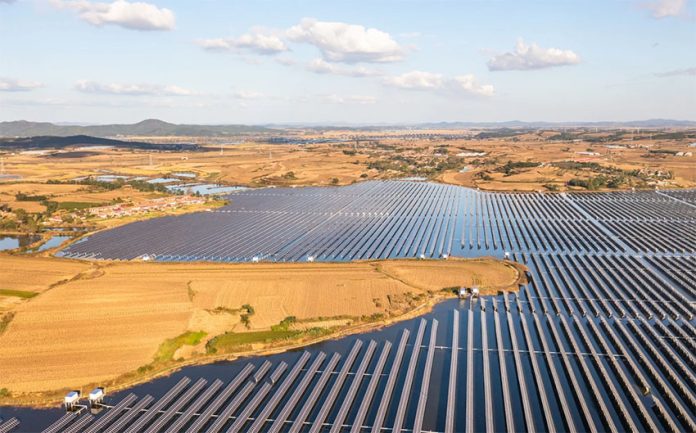Mexico’s Ministry of the Environment and Natural Resources (Semarnat) approved the construction of the Puerto Peñasco solar power plant transmission line on Tuesday.
The Puerto Peñasco photovoltaic plant, which will consist of around 279,000 solar panels, will be the largest in Latin America and the eighth largest in the world once complete. The energy permit, granted by the Energy Regulatory Commission (CRE) in September, allows for the generation of solar power for 30 years. It is expected to benefit 1.6 million consumers and provide electricity to 538,000 homes.
The Federal Electricity Commission (CFE) will construct the transmission line to send power from the solar plant to Baja California, which is not currently connected to the national electricity grid.
The authorization is conditioned on the CFE’s compliance with 16 requirements, including the delivery of an erosion and hydrological risk study and the implementation of a program to care for the surrounding ecosystem.
“The transmission network associated with the Puerto Peñasco Photovoltaic power plant (CFV) is environmentally viable, which is why [Semarnat] has decided to authorize it conditionally in terms of its environmental impact,” the director of the Semarnat office for environmental impact and risk management, Alejandro Pérez Hernández, said.
The transmission line will cost 4.7 billion pesos, and the network will include the following components:
- The Puerto Peñasco-Gulf of Santa Clara transmission line, which will run parallel to the Gulf of Santa Clara coastal highway, connecting the power plant to the Sonoran city of the same name.
- The Gulf of Santa Clara-Cucapah transmission line, running from the Sonoran city to the planned Cucapah electrical substation in Mexicali.
- The Gulf of Santa Clara electrical substation, which will be located near the Sonora-Baja California railroad tracks.
The Puerto Peñasco plant is part of President López Obrador’s strategy to increase the country’s clean energy use; he has said he “maintains the commitment to produce at least 35% of the energy consumed in the country in 2023 from clean and renewable sources.”
The solar plant is a collaborative project between Mexico and the U.S., with the plan being to export solar energy from Sonora to California and other U.S. states. Climate commitments by both countries were recently reaffirmed at the North American Leaders Summit (NALS). Mexico’s “Sonora Plan,” which aims to encourage the use of electric vehicles and clean energy, was also one of the topics up for discussion at the summit.
“Without a doubt, our solidarity in this matter goes to President Biden and [Special Envoy for Climate] John Kerry, a true environmentalist,” López Obrador had previously said on the topic of the Sonora Plan.
The plant’s commercial activities are expected to begin in May 2023, with a second phase planned in May 2024.
With reports from Forbes and Líder Empresarial
